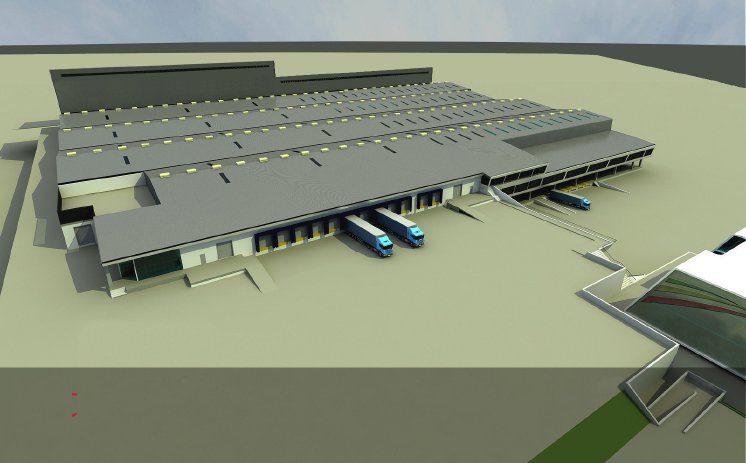The new air cargo terminal at the airport in Addis Ababa will be the largest transshipment terminal in Africa. From there dry and fresh goods such as meat, flowers, and salads are shipped around the world. As planner and general contractor, Unitechnik is building a facility that will meet the needs of the future. It has sufficient capacity for the transshipment of goods in a refrigerated zone with temperature ranges from 2 to 10°C as well as an unchilled dry zone. The combination of automatic and manual systems ensures a high throughput with maximum availability.
The new air cargo facility expands the capacity of an existing air freight terminal which the Unitechnik group also designed and built. Ethiopian Airlines is increasing their current throughput capacity of 120,000 t per year by 500 percent. The new terminal is divided into two different and separate temperature-controlled zones designed to meet the storage requirements of different items. The zones are largely identical in structure. Their core consists of an automatic high-bay racking store for air cargo containers (unit load devices, ULDs). A total of approx. 1,000 ULD storage locations are available to Ethiopian Airlines. The facility is designed to handle a range of ULDs up to 20 feet in size. The demands for the optimum throughput of the process chain are especially high. Once a cargo plane lands, it must be unloaded as quickly as possible and loaded with new freight. For perishables, preservation of the cold chain also has top priority. To support processes ideally, the automatic systems of the air cargo facility are equipped with a total of four ETVs (elevating transfer vehicles).
Designed for import and export
Once the cargo plane has been unloaded and the ULDs have been stored in the automatic system, the actual work at the cargo terminal begins. Goods to be imported are repackaged onto pallets for further transport by truck. To do so, the ULDs travel to special workstations. These can be lowered for easy loading and unloading. The target pallets are then taken by forklift truck to a manual pallet warehouse for temporary storage. Goods to be exported go through the process in the opposite direction. They are then transported to the aircraft.


